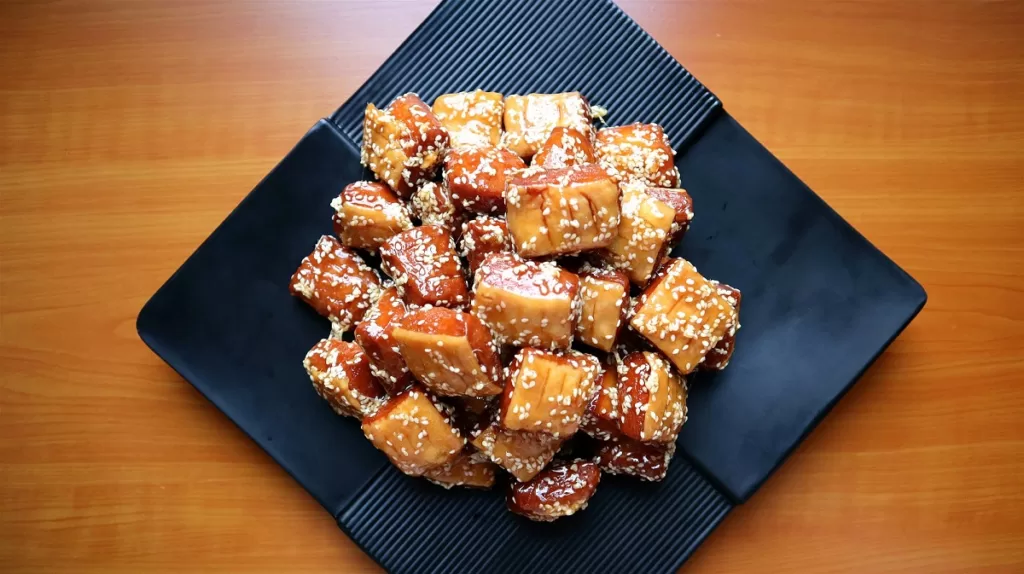Mi San Dao - een kenmerkende traditionele delicatesse


“Mì Sān Dāo (蜜三刀),” translated as “Honey Three Cuts,” is a distinctive traditional delicacy hailing from Shandong and Xuzhou, China. It stands out among the array of local snacks for its glossy, non-sticky texture, delightful sweetness, soft and fluffy consistency, and a rich aroma of sesame. The name itself carries a historical anecdote, rooted in the poetic encounters of Su Dongpo, a renowned scholar-official of the Northern Song Dynasty, during his tenure as the magistrate of Xuzhou.
Legend has it that Su Dongpo formed a close friendship with a hermit named Zhang Shanren, who resided on Yunlong Mountain. The two would often meet to share poetry and indulge in wine. One day, while enjoying their drinks at the Crane Release Pavilion, Su Dongpo took out a newly acquired precious knife. In a moment of joy, he decided to test the blade’s sharpness on a large piece of green stone near the Crane Fountain, leaving three deep marks. As tea and snacks were brought to them, a delicious newly crafted confection with three distinctive knife marks on its surface caught their attention. When asked to name this delectable treat, Su Dongpo spontaneously replied, “Mì Sān Dāo.”
The name, coined by Su Dongpo himself, quickly gained popularity. Tea and pastry shops in Xuzhou started replicating this unique snack. Over centuries, the recipe and craftsmanship of Xuzhou’s Mì Sān Dāo have reached a level of excellence. Perhaps owing to the reverence for Su Dongpo, locals have developed a special affection for this culinary creation. During the Qing Dynasty, when Emperor Qianlong passed through Xuzhou on his southern tour, he specifically ordered officials to procure Mì Sān Dāo from the century-old “Taikang” shop, now known as Xuzhou Taikang Hui Muslim Food Store. Legend has it that after tasting Mì Sān Dāo, Emperor Qianlong was greatly pleased and personally inscribed, “the best snack in Xuzhou.”
The enduring popularity of Mì Sān Dāo is a testament to its unique taste and the historical charm associated with its creation. It continues to be a treasured delicacy, representing the intersection of culinary excellence and cultural legacy in the region of Xuzhou.